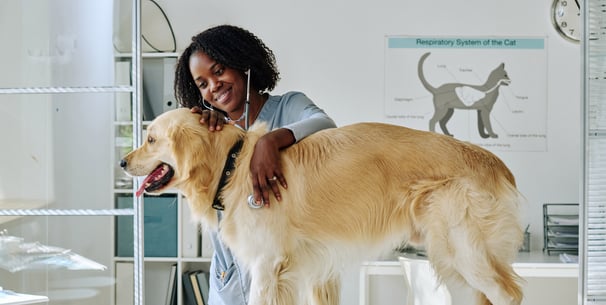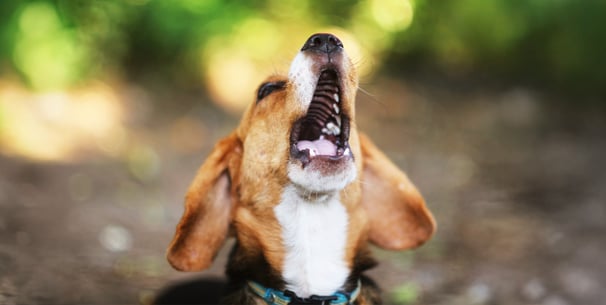How to Train Your Dog to Ignore Other Dogs - Waggel Advice
Index:



Introduction
Taking your furry friend on a walk is probably one of the most crucial activities for bonding.
Ideally, it should be a quiet, peaceful time when your pup can explore the streets and enjoy matching their paces with you.
Unfortunately, this scene of joy and tranquillity can easily get disrupted if another dog approaches you and your dog is not trained to ignore them.
From excitable bouncing and jumping to aggressive behaviour, the situation can quickly escalate, and your dog or the approaching dog can easily get hurt.
That is why it is important to train your dog to listen to your commands, even in the presence of other dogs.
After all, you want to have a nice relaxing walk with your little buddy, and not a constant game of tug whenever they see another pup.
How do I teach my dog to ignore other dogs?
Take a look at some of our tips to help you have a smoother journey when taking dogs on walks.
Think of each walk from now on as one of several training sessions where you learn to identify your pet's type of behaviour. Training class is now in session!
Have a new pup? Overwhelmed and need advice? Don’t worry, we’re here for you. Check out our other posts such as puppy insurance, and natural dog chews, and be sure to get a quote if you’d like to see how much it would cost to insure your new pal!
Responding to their name and positive reinforcement



The first and most crucial step when you plan to take your pup out for a walk is that they are familiar and respond with their name.
You can start their training by rewarding them every time they respond to their name. Once they are more used to it, you can try taking them outside and venture further.
If your pup is not yet responding to their name all the time, wait it out. Do not get angry with them, but rather, use kind words, rewards, and other positive reinforcements to help them respond.
If you take out a pet who is not yet familiar with their name, it might cause trouble when you need to command them or call them back in uncertain situations.
The gentler and more positive you are, the better your relationship with your pet. Although it might be frustrating initially, give them time to adjust with you as well. Remember, that any obedience training takes patience and a constant repetition of basic commands.
Redirecting their attention by shouting their name can be an effective way to help your dog ignore other dogs when out walking. This is one of many training methods and tips as we ever-so lovingly explain below.
Use specific words



Once you get their attention with treats, start using certain command words and train them to follow those commands.
For example, while training your dog to ignore other dogs, make sure they pay attention to specific words. It will make your commands stand out in a situation that is causing them distress.
Phrases or words like “to me” and “watch me” can be useful as commands. They will pull their attention towards you and allow you to handle any situation that gets out of hand. Once they give you attention, reward them with a treat or even a simple pat. This will help your canine friend listen to you.
Once they get familiar with such commands, you’ll have a very easy and fun time with your pet as this type of distraction training can prove highly effective.
Make sure your dog pays attention to you



Of course, using commands for dogs is all well and fine. However, that will only be effective if they actually pay attention to you!
For this, you have to get your dog to be familiar with you. Hopefully, they will recognize your scent by the time you take them out. And with more familiarity with your voice, it is hopeful that they will listen to you.
Take your dog on a walk and notice their temperament. Once they start showing a calm disposition, make them walk by another dog from a little distance.
Do not take them too close to other dogs at first. As soon as your dog starts showing signs of aggression or excitement, use your command to get their attention and calm them down. When they calm down, offer them a treat.
Train them to not stare at other dogs as it might excite other dogs and make them attack your dog. Whenever your dog stares at another dog, call back their attention with a command.
Gradually, walk your dog closer and closer to other dogs. Use this same process of positive reinforcement until your dog calms down or does not get distracted by other dogs, even if they are right in front.
Make sure to reward him with treats whenever he shows good behaviour. Repeat this process a few times. Use treats as positive reinforcement or a reward whenever your dog shows good and controlled character in front of other dogs.
After a few days, your dog will internalise this behaviour. They should walk calmly without any signs of distress, no matter what comes in front of them.
Use distractions



Once you think your dog is sufficiently trained, try to level up the distractions that come their way.
For example, take them on a walk through a path often frequented by other dogs. Use your training to control their behaviour and make sure that they ignore the presence of other dogs. They will surely get better at it with practice.
Another common distraction can be to take them on a walk on a busy, urban road.
Try to control their attention in front of traffic noises and crowds. Use their favourite treats as positive reinforcement to get them to be on their best behaviour.
Repeat this process until they become used to it.
Use effective lead control
Often, when your furry friend on a leash gets excited and acts unruly, you might feel tempted to keep them on a tight leash to get them to listen to you.
However, this will only make them act more aggressively, and they might even pull against it and exhibit leash aggression.
If your dog is acting unruly, you might tighten it slightly to reassess your grip on it but do not make the mistake of pulling on it.
If you are starting your training with your dog, you might want to use a short leash to have your dog’s movement restricted to a shorter area and have them under control.
At this stage of training, command words become very important. Rely on them instead of the movement of a loose leash.
Once your dog starts listening to command words, you can slowly begin to use a longer leash. This will allow your dog to explore his surroundings, get exercise, and enjoy their walk without any distractions.
Conclusion
These are some of the ways in which you can train your dog to ignore the presence of other dogs during their walks. Walks are essential for maintaining your dog’s good health.
It can also serve as a good bonding time between you and your dog. That is why it is more important to train your dog not to give in to distractions from a young age and enjoy their daily walks with you by their side.
Waggel Pet Insurance
Need more help? You're in luck if you're a Waggel Pet Insurance member. Along with our excellent coverage, we offer access to a 24/7 online vet to answer all your sticky questions, especially if you need grooming assistance.
Not a member? Why not get a quote now and cover your furry friend for a range of illnesses, all while enjoying our amazing perks and rewards.
Want more like this?
Get updates from us with helpful info, advice, answers to frequently asked questions and much more.
Index:
Related posts:
Get your quote
Along with our excellent coverage, we offer access to a 24/7 online vet to answer all your sticky questions.





